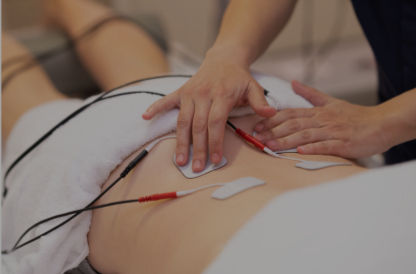Enhancing spinal flexibility, reducing pain and correcting posture with physical therapy
- contactaapt
- Nov 26, 2023
- 3 min read
Updated: Dec 4, 2023
What are Degenerative Diseases?
Degenerative diseases are often linked to both age and genetics. The gradual deterioration of joints or discs results in a reduction in the normal height of bony segments in the back. This can lead to increased joint pressure, bone-on-bone friction, and heightened inflammation. Conditions like Degenerative Disc Disease (DDD) or Degenerative Joint Disease (DJD) commonly accompany the stiffening of spinal joints and the weakening of crucial spinal muscles.

How Physical Therapy with AAPT Helps
Although the degenerative process itself cannot be reversed, considerable improvements can be made to enhance mobility, alleviate pain, boost strength, and enhance overall function. Physical therapy stands out as an ideal non-invasive treatment that focuses on enhancing spinal flexibility, strengthening core muscles, reducing pain, and correcting posture. These aspects collectively contribute to pain reduction and a potential return to normal or modified activities.
Understanding Degenerative Disc Disease
As a natural aspect of aging, the fluid-filled discs between our neck vertebrae tend to dry out and shrink. However, in certain individuals, this process can be excessive, resulting in a significant loss of height in specific sections of the neck. This reduction in height can escalate bone-to-bone friction, spur bone growth, and increase pressure on both joints and nerves exiting the neck.
Symptoms associated with this condition can vary from chronic neck pain to radiating discomfort in the arms, accompanied by sensations of numbness, tingling, or headaches.
How Physical Therapy Helps
Though the disease process itself remains unchanged, maintaining good posture, joint mobility, alignment, strength, and range of motion can effectively mitigate or eliminate symptoms. Additionally, these practices contribute to maintaining a healthier spine, facilitating a potential return to normal activities.
Understanding Arthritis and Stenosis
As we age, the frequent use of neck joints and muscles leads to wear and tear, resulting in structural changes in the neck bones and joints. These changes, coupled with poor posture, can cause bone spurs that irritate surrounding tissues.
When these spurs encroach upon the holes where nerves exit the neck (foramen) or the central spinal cord canal, it is termed spinal stenosis. This condition can manifest a range of symptoms from chronic pain to numbness and tingling in the arms. In severe cases of central canal stenosis affecting the spinal cord, individuals may experience poor balance, leg pain, and difficulty walking.
Osteoarthritis in the neck can cause chronic pain, stiffness, and limited range of motion, especially when turning the head or looking up. Similarly, individuals with rheumatoid arthritis may suffer from neck pain, highlighting the importance of maintaining strength in shoulder, neck, and postural muscles to mitigate associated risks.
How Physical Therapy Helps
Our physical therapists conduct assessments focusing on range of motion, joint mobility, strength, and posture. Based on these assessments, a tailored treatment plan is devised, incorporating gentle hands-on therapy to restore joint mobility, massages to improve muscle flexibility, strength-building exercises, range of motion exercises, and postural retraining.
Collaborating with you and your physician, our aim is to restore natural movement, alleviate pain, and facilitate a return to your usual activities.
Understanding Herniated or Bulging Discs
A disc acts as a cushion between neck vertebrae, transitioning from a jelly-like fluid sac to a drier and more brittle state with age. Injuries, poor posture, and strain can lead to ruptures in the rings of the disc, causing the nucleus to press outward. Eventually, this can result in disc bulging, leading to irritation of nerve roots along the spine.
In severe cases, herniation occurs, intensifying pressure on nerve-exiting spaces. Symptoms range from localized pain to numbness/tingling in specific shoulder, arm, or hand areas. Severe cases may lead to complete loss of sensation, muscle weakness, or paralysis in the upper extremity.
How Physical Therapy Helps
The majority of bulging and herniated discs can be conservatively treated with physical therapy. By considering your medical history, symptoms, and testing, our therapists determine affected areas and develop a comprehensive plan. This plan focuses on relieving disc pressure by enhancing joint function, muscle strength, and posture. Modalities like ultrasound or electrical stimulation may be utilized to reduce pain, muscle spasms, or inflammation. Our therapists guide you in regaining lost strength and range of motion while educating you on exercises to maintain good posture and minimize the risk of future episodes.
Contact us today to explore how we can swiftly relieve your pain and restore your function!

"After many months of neck, shoulder and arm pain I am so glad I came to see Dr. Borgerding! In just a couple weeks my pain has subsided. He was very knowledgeable of where the pain was coming from and I left feeling immediate relief. I am continually getting better and feel more equipped with how to prevent further injury and pain. I highly recommend anyone who is struggling with pain to make an appointment."
- Jenn A.




Comments